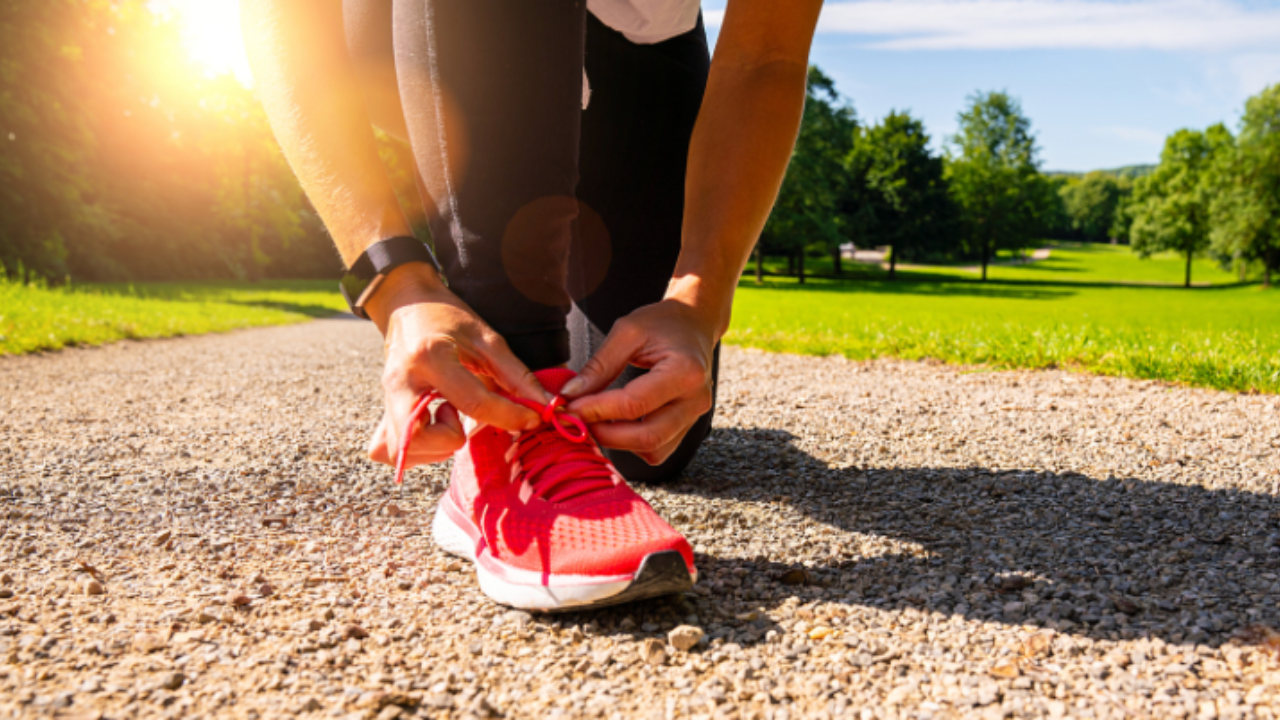How Do I Know Which Running Shoes Are The Right Ones For Me?
May 11, 2023
If you are a runner or hang out with runners, you understand that they tend to be a little bit shoe obsessed. They are always looking for new shoes that will make them feel like they are running effortlessly, decrease their risk for injury, and shave time off their next race. There is a ton of information out there and a lot of it seems to contradict each other. Some companies claim that having a soft cushioned shoe with a heel to toe drop will make you feel like you are running on clouds and will help fix your aches and pain, while others will claim that a minimalist shoe is the only way to go! Minimalist shoe companies will tell you all about how we need to feel the ground under us and allow the foot to function the way it was naturally intended.
So, the next time you go into a shoe store, what should you be looking for? Before we dive into things to consider when buying shoes, I do need to clarify one thing: SHOES DON’T RUN! PEOPLE DO! There is no magical shoe that will take away your pain, allow you to run effortlessly, and shave minutes off your next 10k time. Over the years, shoe technology should be getting better but injury rates are staying about the same. Thinking about how technology has improved but injury rates have stayed the same supports that idea that shoes are not the answer to many of our running problems.
However, there are some important things to consider when buying a shoe. Here are some of the most important things:
1. Distance: The longer the distance you are running the more cushion you are going to want. If you are running on concrete and training for a marathon, doing a 20-mile run with no cushioning will make you more uncomfortable.
2. Terrain: If you are a trail runner, you are going to want to look specifically at trail running shoes. These shoes will have a different bottom to help manage different terrain and weather.
3. Heel to toe drop: One of the important things you want to look at is what the heel to toe drop is in your current shoe. For our body to function optimally, you want to have as small of a drop as your body can tolerate (this will vary from person to person). The mistake that people make is they make too big of a change in their shoes. You don’t want a change of more than 4mm in your shoe. For example, if you are in a shoe that has a 12mm drop, you don’t want to go straight to a 4mm or zero drop shoe. Your next shoe would be a shoe with an 8mm drop and you would continue to work your way down.
4. Width of Toe Box: This might be the most important thing to look at when deciding on your shoes. The width of the toe box of your shoe is very important to how your foot functions. To determine if the shoe is wide enough, take the insole out, put it on the floor and stand on it. Look down at your foot. If your foot is hanging over the sides of the insole, this is a good indicator that you need something wider. The information given above is a good guideline, however it is important to remember: “SHOES DON’T RUN, PEOPLE RUN."
Next time you are looking for shoes, keep these key points in mind but remember: if you are expecting shoes to solve your problems, you are setting yourself up to be disappointed. It is best to see a physical therapist who specializes in treating runners so you can find the root cause of the problem and get back to doing what you love, pain-free.
Thanks for reading!
Let us help you figure out to live your best active life today!
Remember, Movement is Medicine!

